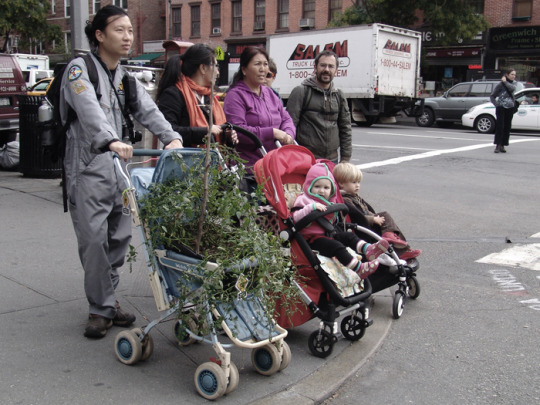Business of Art | 5 Ways to Boost Your Social Media Presence Now
Your audience is out there; help them find you and stay engaged.
Marketing is an opportunity to shape the narrative about who you are and what you do. This framing from The Profitable Artist (Allworth Press, 2018) is especially relevant to social media, which allows you to define how you present yourself as an artist on a daily, or almost daily, basis. Rather than being a chore, social media can be a meaningful, authentic way to engage your audience, forge connections, and create new opportunities. It could even become a part of your artistic identity and practice.
Each artist’s goals for social media will be unique. Whether you’re a visual artist hoping to connect with collectors on Instagram, or a social practice artist seeking opportunities to collaborate with stakeholders, we hope these five tips from artists and social media experts will help you finetune your approach to this essential component of an artist’s marketing strategy.
Find Your Platform(s)
With social media, you don’t need to do it all. It’s helpful to specialize, and luckily, the platform or platforms that you enjoy the most will best convey who you are and what you do to your audience. Mara Vlatković, a communications professional, arts manager, and a contributor to The Profitable Artist, recommends asking yourself two questions to determine where your time will be best spent: 1) Where is your audience already? 2) What do you feel comfortable using consistently?
If you’re a writer, for example, Twitter can help you find publishing opportunities and stay current with trends and news in the literary world. Poet Dorothea Lasky says: “Because I’m in the word business, Twitter tends to be more poetry-focused for me. Instagram is more of an emotional and personal space for me and I love that about it.” In Lasky’s case, one platform is more helpful for her writing practice and career, and the other is a personal outlet.
If you do use multiple platforms, try to avoid automatic cross-posting. “Posts shared directly from Instagram to other platforms” for instance, says editorial strategist Robin Cembalest, “lose some of their powers—the tags don’t translate, and on Twitter the picture doesn’t show. It’s best to craft posts for each platform.” If you do want to recycle content and images, try posting directly in each platform and tweaking the text of the caption at least slightly.
Finally, once you’ve landed on your chosen platform or platforms, be consistent with your posting schedule. Building a following takes work, and the best way to maintain your followers’ interest is by engaging them on a regular basis.
Create Buzz with Action
One way to maintain a consistent schedule, and to liven up your accounts, is to show your process and integrate social media with your day-to-day. Studio shots, works in progress, and other behind-the-scenes views can engage your audience by drumming up excitement around the finished piece or performance, and can help your followers connect with you on a more personal level. “If you’re a dancer,” says Cembalest, “video is a great tool. Try showing moves in slo-motion, or in time-lapse. ‘Fails’ are fun content, too—to show the work that goes into each step. Also, explain to the viewer what’s happening in the photo [or video]—demystify!” By providing your followers with insider access, you may even inspire and empower them to create their own work or experiment with something new.
Be Specific
Use targeted, specific hashtags to reach your audience. Again, Cembalest observes: “Hashtags are unparalleled for information, activism, and building self-defined community through tags like #BlkTwitterstorians, #MuseumDetox, and many more. Go for the specifics.” Hashtags like #painting or #art are less likely to help you find your specific audience, and for them to find you. Delve a little deeper into your work by finding hashtags that describe unique materials you employ, like #ThreadOnPaper for textile artists, or specific aspects of your subject matter.
A note on accessibility: To make your hashtags more accessible, capitalize the first letter of each word, i.e., #InstallationShot versus #installationshot. This is referred to as “Camel Case” or “Camelbacking.” On Twitter, include your hashtags and mentions at the end of a tweet. Beyond hashtags, you can also include descriptions of your Instagram images in the captions. See this example of how to use image descriptions from writer, curator, and social media expert Kimberly Drew. These are just a few steps that can help ensure that blind or visually-impaired users will be able to engage with your content.

Experiment
Allow yourself some time to find the right tone and rhythm for your posts. Emily Best, Founder of Entertainment company Seed&Spark, advises: ”This is about experimentation. Finding your voice online is no different from finding your voice as an artist—and each platform is a different storytelling medium. You have to try things, and see what fits and makes sense across each platform.”
Many artists wonder about the best time of day for posting. While there is information online about which times are generally most active on each platform, this information will be different for each audience. Try posting at different times and keep track of what works best, either informally or using tracking tools (find recommendations from Vlatković here.) Vary your content, too, in order to engage your audience while learning about their preferences. On Instagram, for example, try creating a good mix of posts with single and multiple images, as well as video. You’ll want to balance variety with some consistency, however; ensure that your posts look like, or read like, they originate with you or are curated by you, with your unique voice and vision.
Prioritize Engagement Over Follower Growth
Success on social media, if defined only by follower count, is hard to guarantee. That’s why it’s more productive to think about engagement. If you do happen to have a high amount of followers, but your posts are getting very few likes, you may want to adjust your approach.
Again in Best’s words: “Social media for artists is really not about getting your audience to just look at you and what you’re doing. It’s about creating spaces for your audience to connect to each other through shared interests.” You can encourage this sense of community and mutual support by sharing the works of others. If you’re a writer, use hashtags like #AmReading to share books by writers you’re excited about. No matter your discipline, you can share content about performances, readings, exhibits, and installations by artists in your network or that you admire.
The Instagram Story feature is an especially great way to capture current happenings in your discipline (and be sure to tag those artists’ accounts and use relevant hashtags). Not only does cross-promoting help create community; it can boost your chances of getting your work in front of the right audience. The Profitable Artist recommends that artists interact and lift up people whose ethos aligns with yours. “By making an effort to share their content, comment on their posts, or otherwise support and engage them online, you increase your chances of being noticed and earning a reciprocal action.” An account you tag just may follow you back, and engage with your content in return.
You can also take advantage of various interactive features on Facebook, Instagram, and Twitter to engage your audience. On Twitter, you can use the Poll feature, or simply tweet a fun question for your audience to respond to. On Instagram, you can use Polls, Questions, GIFs, Boomerang, and more to create memorable Stories.
To sum up: just as you know your work best, so too are you the expert on what will work best for your social media presence. But don’t be afraid to seek inspiration from other players in the social media sphere, and to try something new from time to time. These platforms are constantly evolving, which provides even greater incentive to continuously hone your voice and style.
– Mirielle Clifford, Program Officer, Online Resources
This article draws inspiration from #ArtistHotline, an initiative dedicated to creating an ongoing online conversation around the professional side of artistic practice. Our goal is to help artists discover the resources needed, online and off, to develop sustainable careers.
Have an arts career question? You can contact NYFA staff directly via the NYFA Source Hotline at (800) 232-2789, from Monday – Friday, 3:00 – 5:00 PM EST or email [email protected].
This initiative is supported by the Emily Hall Tremaine Foundation.
Images from top: Tracy Miller (Fellow in Painting ’18); Tattfoo Tan (Fellow in Interdisciplinary Work ’18)





